AP Environmental Science/Soil and Biomes
Desert
[edit | edit source]- What causes deserts?
-Rain Shadow effect
-Convection currents (sinking air)
- Where do deserts commonly occur geographically?
-Around 30N and 30S latitude
-Interior continental areas
-Leeward side of mountains
- What climate zones have deserts?
-Tropical: Hot regions year round
-Temperate: Cooler winters, some more precipitation
-Polar: Cold, winter
- How do plants and animals survive?
Plants
[edit | edit source]- Fast growing/blooming annuals
- Thick, waxy cuticle
- Thin spine
Animals
[edit | edit source]- Highly efficient kidney
- Nocturnal/Burrowers
- Thin and linkey; disperses heat
- Human Impactes
- Large cities
- Soil destruction by vehicles
- Depletion of groundwater
- Land disturbance/pollution from mineral extraction
Grasslands
[edit | edit source]
A grassland is a "fire-maintained" ecosystem, thus frequent fires are good. It returns nutrients to the soil, accommodating in productivity. Grazers, animals that eat grass, are common in grasslands as they maintain the grass to keep it, so to speak, "grassy". Animals in the American prairies consist of elks, bisons, while an example of a browser (an animal that feeds on trees and buds) is a deer. In a grassland, it is better to have small, time-time fires than one, huge inferno.
- Human impacts
- Agriculture (foods: grains, breads, wheat)
- Fossil feuls
- Overgrazing by livestock
- Oil production and off-road vehicles in arctic tundra
Grasslands have enough precipitation to support its grasses (and more precipitation to be different from a desert and less precipitation to be different from a forest) but not enough to support large acres of trees. Grasslands are found in tropical, temperate, and polar regions and are most common in the interiors of continents (North America).
Savanna
[edit | edit source]
A savanna is a tropical grassland. Scattered along with it are scattered groups of trees (acacia, for example), which naturally contain thorns to keep herbivores away. A savanna usually has warm temperatures year-round and changes between dry and wet seasons.
During the dry season, droughts are pretty common. During the rainy seasons, since savannas are "fire-maintained", fires time-time take place during the beginning of this wet season. Intense grazing by grazers and browsers prevent the growth of trees and bushes, as do the dry and fire-full seasons as well. Although the radically different seasons, the savanna plants have evolved to adapt to these circumstances they face. These plants have deep roots that can tap into groundwater.
Herbivores in the savanna have attained astounding eating habits that keep competition to a minimum. Giraffes like to eat leaves from the tops of trees while the elephant eats leaves farther down.
In some savannas in Africa, overgrazing by cattle and the use of trees for firewood (deforestation) have converted savannas into deserts.
Fertile Soils
[edit | edit source]
Temperate grasslands once covered a good majority of the Earth, but their fertile soil was exploited. Its soil was used to grow crops, raise cattle and build cities. Although rigorously abused, there are still some temperate grasslands we're allowed to enjoy.
In temperate grasslands, winters are terribly cold and summers are radically hot and dry. Precipitation is a guess, as they fall unevenly throughout the year. What keeps the trees and bushes from growing (except in the case of the trees and bushes in rivers)? Drought, time-time fires, and constant grazing.
Due to the death of above-ground parts of the majority of the grass... [causing] decomposition every year, organic matter from the dead grasses accumulates to produce a deep, fertile soil. This soil is held tightly in place by the works of a network of stocky, intertwined roots of drought-tolerant grasses. This is the case with soil unless the topsoil is plowed up, causing it to be blown away by prolonged periods of exposure. These grasses are not only drought-tolerant but also fire-tolerant, as the fires burn the plants above the ground but do no damage to the roots below the ground, which is the cause of new plant-life.
The combination of continuous wind-blow and rapid evaporation causing fires, which both the wind and fire help keep the grassland a grassland!
Tundra
[edit | edit source]
A tundra (Russian for "marshy plain") is a grassland covered with ice and snow except during the summer. Some ecologists consider the tundra as a very cold desert due to the low levels of the precipitation and the unavailability of the water (which is frozen and not able to support life).
The winters in the tundra are long and dark, and usually extremely snowful. Under this snow, there is a squishy carpet of low-growing plants, mostly grasses, lichens, mosses, and dwarf shrubs. Trees/tall plants cannot survive in the cold and windy tundra due to these chilling circumstances. The period for growing for these tundra plants takes place during the 6-8 week summer when the sun shines constantly. As a result of the short growing season, the soil and vegetation recover from injuries VERY slowly.
Permafrost is an underground soil in which water stays frozen for a few years. Sometimes, even the soil freezes due to the long and cold winters.
So, what happens during the brief summer? The permafrost layer prevents melted snow and ice from being absorbed into the ground. As a result, the permafrost layer creates bands of water bodies (lakes, marshes, ponds), which attract insects such as mosquitos. These insects attract the migratory birds, such as waterfowl. Animals in the tundra adapt to its circumstances with thick coats of fur (arctic wolf/fox), feathers (snowy owl), or taking shelter underground.
Global warming plays an effect on the tundra: Global warming causes permafrost to melt, releasing methane in the process. Methane is a greenhouse gas that can increase global warming, thus increasing the rate of which the permafrost melts.
Humans also negatively affect the tundra with their oil drilling sites and military bases.
A limiting factor for the arctic tundra is temperature and light, while a limiting factor for the alpine tundra (another type of tundra where there is more sunlight and NO permafrost layer) is temperature (during the summer, the alpine tundra can have beautiful flowers for display).
Chapparal
[edit | edit source]
A chapparal (temperate shrublands) is a Mediterranean climate-ecosystem. It is also a scrub-shrub system. Dry, warm summers and cool, rainy winters. Found in Southern California (LA, San Diego). Its shrubs are subject to periodic fires. Its relatively close location to the sea gives longer winter rainy seasons than nearby deserts; the fogs that are common during the spring and fall season and occasional small trees with leathery leaves reduce evaporation. The soil of chaparrals is thin and not very fertile.
During the rainless (dry) and warm summers, chaparral vegetation becomes extremely dry and highly prone to fires. These fires are beneficial to the climate-ecosystem:
- Several of the shrubs maintain food hosted in their roots. Hot fires are the only cause of seeds sprouting out.
- When the first rain of the summer season comes by, annual grasses spring up and use the nutrients released by the fire. New shrubs grow as a result.
Due to the favorable circumstances here (dry, warm summers; cool, rainy winters), humans have moved to chapparals, such as in central Chile and southern Australia, and considerably altered the environment. One of the downsides of living in a chaparral is the constant fires, which pose a serious threat to human life, and mudslides during the rainy seasons.
Forest
[edit | edit source]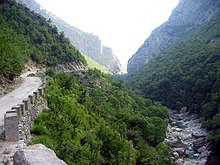
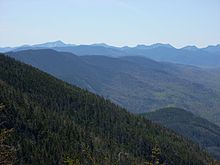
A forest requires moderate-high annual precipitations which support trees. A forest contains several different species of trees and smaller forms of vegetation.
- Tropical, temperate and polar regions of forests
-Tropical
-Temperate
-Boreal/Taiga (Arctic)
- Human Impact
- Agriculture
- Harvesting for timber and paper
- Mineral mining
- Air pollution
- Tree plantations
- Pollution of forest streams
Tropical Rainforests
[edit | edit source]
Tropical rainforests are found relatively close to the equator, where the hot, moist air rises and dumps its moisture onto the surrounding area. These forests have year-round warm temperatures, high humidity, and heavy rainfall (monsoons). The tropical rainforests usually consist of redwood and sequoia trees, and they are found north of San Francisco to British Columbia (in the US).
Tropical rainforests usually house huge trees with wide bases, which block out sunlight for the plants on ground-level. This blocking of sunlight is why tropical rainforests have very little vegetation. Many of the small plants on ground-level have huge leaves in order to capture what little sunlight they might get. A limiting factor for tropical rainforests is light.
Although the severe lack of light, tropical rainforests tend to have high nets of productivity due to the precipitation rate; they also have high biodiversity.
Due to the little wind in the forests spreading seeds/pollen (due to the dense vegetation), most rain-forest plant species depend on animals (bats, butterflies, bees, etc.) to pollinate their flowers and to spread speeds all around. The Rafflesia smells like rotten meat in order to attract flies and beetles to pollinate its flower.
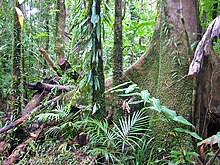
It seems the tropical rainforest has a huge, thick, fertile soil... correct? Nope! The soil of a tropical rainforest is usually acidic and low in nutrients due to the terribly-fast competition. Dropped leaves and dead animals are usually decomposed at a very fast rate due to the warm, moist conditions and scores of decomposers. Most mineral nutrients released by decomposition are taken up by trees, vines, and other plants. Because of this, tropical rainforest soils contain very few plant nutrients.
This is why rain forests are not good places to clear and grow crops/graze cattle on a regular basis. The nutrient-poor soil only has a limited time to support crops (about 1-2 years). Although this factor, rainforests are still commonly cleared or degraded for deforestation, growing crops and grazing cattle. This is a serious issue: If the destruction of rainforests continues, then global warming will accelerate. Trees that are used to remove carbon dioxide will no longer exist/be in plentiful, so carbon dioxide (a greenhouse gas) will accelerate global warming.
Temperate Deciduous Forest
[edit | edit source]
Temperate Deciduous Forests grow in moderately avg. temperatures that have significant changes every season. Long, warm summers with cold winters. Precipitation is evenly spread and prevalent throughout the year.
Trees like oak, maple, ash, and gum drop their leaves in the fall to become dormant. Every spring after the fall, these trees grow new leaves. This is why temperature is a limiting factor to a temperate deciduous forest.
Temperate deciduous forests have fewer trees than the tropical rainforests, but more sunlight means more diversity of plant life at ground level. Slow decomposition results in a thick layer of slowly decomposing leaves that serve as a storehouse of nutrients.
This biome is the most disturbed biome as these biomes were once home to several species, such as bears, wolves and foxes, but they have been misplaced/killed and have been replaced by squirrels and rabbits. Humans came over to this biome and industrialized and urbanized it. See the Eastern USA and western Europe as examples.
- Prevalent geneses
- Oak
- Hickory
- Beech
- Maple
- Ash
- Gum
- Much more diverse; diversity increases from the poles to the equator
Taiga
[edit | edit source]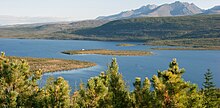
Taigas are found south of the arctic tundra in the northern regions across Asia and North America. Winters are long, dry and cold. Summers are short, with cool-warm temperatures. The availability of the sun varies, with it shining only from 6-8 hours a day in the winter while it shining 19 hours a day during the summer.
The needles of the evergreen/coniferous are kept all year round. These small needles have a thick, waxy coding on it, which prevents them from succumbing to the cold, harsh winters and drying out (as winter = cold air, and cold air = less moisture). When summertime comes about, they are ready to take the advantages that summer has to offer (starting photosynthesis earlier).
Plant diversity is low due to the harsh temperatures.
The soil is nutrient-poor and thin due to the low temperatures, waxy coating of the coniferous needles (which leads to acid; the soil is acidic). Lack of decomposition takes place.
Despite the low plant diversity, the taiga contains a wide variety of wildlife: Year-round residents include the wolves, moose, and bears while insects are attracted to the waterlogged soils, forming acidic bogs (muskegs). Insect-eating birds, such as the warblers, are attracted to these acidic bogs.
Mountains
[edit | edit source]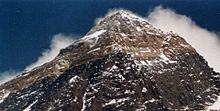
Mountains are diverse ecosystems, not only elevation but N-S orientation. They usually have snow-covered tops with high albedo, which reflect solar radiation. Mountains cover 1/4 of the earth's land surface. Huge changes in altitude, climate, soil, and vegetation take place in mountains.
Due to the steep slopes, mountain soils are vulnerable to erosion when the vegetation keeping them in place is removed by natural perturbations (landslides, avalanches) or anthropogenic factors (timber cutting, agriculture).
Mountains do many ecological roles that benefit the communities they're in:
- Majority of the world's forests are in mountains.
- Habitats for species found nowhere else in the world.
- New habitats for animal species driven away from their homelands.
- 75% of the world's freshwater is found in glacial ice, mostly found in mountains.
- Mountaintops with ice (highest albedo) reflects solar radiation back into space.
- Affects sea level based on glacial ice.
- Slowly releasing melting ice, snow, and water kept in the soils and vegetation of mountainsides over to small streams.
- Human Impacts
- Timber and mineral mining
- Hydroelectric dams
- Recreation
- Air pollution
- Increase tourism
Agriculture
[edit | edit source]- Forests are cut down so that timber is harvested for wood and paper
Mineral mining
[edit | edit source]- Coal
- Mountaintop renewal: Southwestern VA
- Strip mining
Tree plantation
[edit | edit source]- Harvested for wood and paper (timber)
Limiting Factors
[edit | edit source]- Desert: Precipitation
- Arctic tundra: Temperature/Light
- Alpine tundra: Temperature
- Tropical rain-forest floor: Light
- Temperate deciduous forest: Temperature (trees lose leaves)
- Grasslands: Precipitation
Wind
[edit | edit source]Wind plays an important factor in biomes:
- Promote sustainability by helping distribute solar energy.
- Promote sustainability by helping distribute earth's nutrients.
^Supports life-sustaining biodiversity of deserts, grassland, and forests.
^Supports the diversity of species whose interactions in these ecosystems help control population sizes.
Soil
[edit | edit source]To put it basic, soil is "organic stuff".
- O layer (Humus)
- A layer (Topsoil)
- B layer (Mineral, Clay, Sand, Silt)
- Parent layer (Bedrock; Granite in VA)
Decomposition (from O layer to A layer) requires a warm and moist environment, bacteria and fungi (decomposers), neutral pH at about 6-5 to 8. Acidity can come from the minerals in the soil/acid rain/leaves from the falling trees.
Soils in Dif. Biomes
[edit | edit source]See also: Soil Formation, including Soil Formation#Soil and Climate
- Desert
- A lot of heat, low precipitation
- Low productivity (lack of organic matter)
- No rich O layer or A layer
- Mostly mineral B layer
- Alcaline: High pH (basic)
- Grasslands
- Humus is created from the dying grassland plants (every year)
- Rich, thickest layer: A layer
- Temperate deciduous forests
- A layer: Significant
- O layer: Significant (from the leaves from the trees)
- B Layer: Clay; naturally acidic
- Coniferous forest/Maritime Forest
- O layer: Very significant
- Needles exclude trees from growing due to their acidity
- Not big of an A layer due to lack of decomposition.
- Tropical Rainforest
- Not much of an O layer due to competition for nutrients. So much competition that the nutrients are used up very fast.
- Little A layer
- Mineral B layer
SIDENOTE: Cutting down a rainforest for crops is a bad thing due to the limitations.
